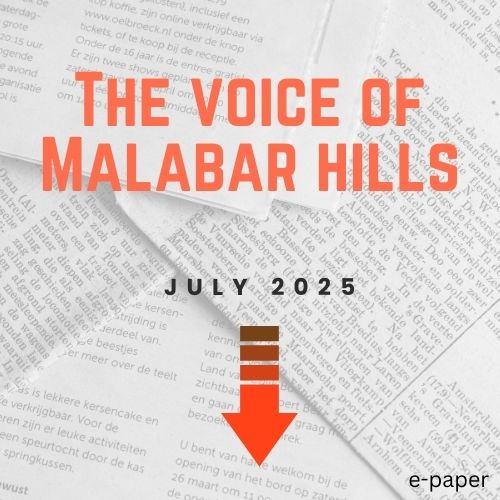
In the hustle and bustle to develop, succumbing to the guile of “upward mobility” and a warped sense of gentrification, this view is testament to the ethereal, almost surreal, beauty of Bombay that we’ve lost. As per several accounts of the 19th and even early 20th centuries, it was, in the estimation of the average British traveller, accounting for all that their eyes might have beheld, given their experiences, predilections, and prejudices, Bombay was a place of singular beauty in the eastern part of the world. Oftentimes compared with Venice, a notion now laughable if the metric is purely aesthetic, the original ‘Isle of Palms’ is on stunning display in this watercolour.
Since what we’re seeing is an almost-180 degree panorama, there’s a lot to decode in this view – from right to left, is Malabar Hill, Gowalia Tank, and August Kranti (formerly Gowalia Tank) Road in the foreground, Girgaum and Back Bay in the middle distance, and Colaba and Fort in the background, “capped” off by mainland Maharashtra in the far distance. Sketched from ‘Prospect Lodge’, an early structure on Cumballa Hill that accommodated Europeans travelling on a budget, it was located at the cul-de-sac on Anstey Road, off Altamont Road, literally at the edge of a cliff (consequently offering us this unobstructed view), at the spot where Prithvi Apartment stands today (called “Greece” colloquially by local residents for much of the 20th century, when a grand Greek-styled mansion stood there!)
Considering that only a handful of townhouses have come up in the August Kranti Road area here, and that the Girgaum area is virtually untouched, it seems like this is a relatively early sketch of Bombay (the work is unsigned and undated.) In fact, since Bombay offered few opportunities of patronage for professional artists, and in the Company era (pre-1858) was not yet heavily “marketed” as a tourist destination in England, even visitors were few and far between, leaving us few amateur artworks from this time.
The clues to dating this view lie in the barely-visible St. Thomas’ Cathedral on the extreme left, beyond the vaguely discernable fort walls, which was consecrated as a Cathedral in 1836, and the spires pointing skywards in the fashion seen here appear in 1837. Further, Colaba Causeway was built in 1838, and while it is unclear whether it has been built already in this view, as the early version was merely a skeletal structure snaking through the erstwhile island, it is at the very least in it’s very early form here, with very little to no development around, hence this work would’ve been created around this time. Whatever be the case, this is amongst the earliest-ever works to be sketched from the relatively rural and inaccessible Cumballa Hill area.
One of my personal favourite bits that this watercolour showcases relates to that very part of the archipelago – the row of trees on Old Woman’s Island (part of Colaba Causeway today) that dot the tiny strip of land in the distance has been referenced to as a navigational marker as early as the late 1600s! One of the earliest (and might I add, charmingly quaint) descriptions in an English Pilot (standardized navigational manuals used by East India Company ships) describes how when at sea off Colaba Island, sailing towards Bombay harbour on the eastern side, observing the seven trees above Malabar Point (site of Raj Bhavan) and aligning the opening between them to the tallest tree on Old Woman’s Island would prevent capsizing at the dreaded Sunken Rock (Sunk Rock Lighthouse today, visible east of Colaba.) Imagine a time that trees were so safe that their placement was set in ink on standardized guidebooks!
And finally, the focal point of the artist’s subject – within the fields of the Brahmin-occupied village centered around the old Gowalia Tank, stood stately mansions abutting Malabar Hill on opposite sides of the tank, at least as early as the late 18th century. These were grand bungalows with grand names, two of them being The Retreat and Tankaville, occupied for several decades by East India Company officers, where these “fish out of water” would take their evening constitutional nearabout the fish and fowl that resided in or around the tank. Being just a few hundred metres away from the tranquil Back Bay, where fishing boats seem to be up and about aplenty during dry season, and pilgrims from Western India and beyond would arrive for centuries to worship at Banganga, one might begin to wonder where this view, taken from virtually in the neighbourhood where Antilia has now come up, has disappeared.
(Picture and article by Mrinal Kapadia, resident of Cumballa Hill, he is a collector and researcher, and can be reached on mrinal.kapadia@gmail.com or via Instagram on @mrinal.kapadia)





